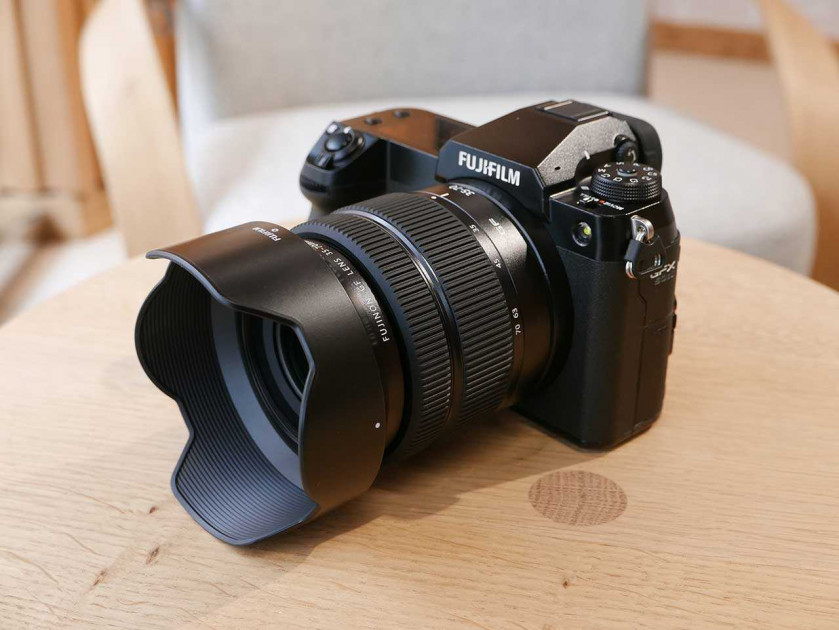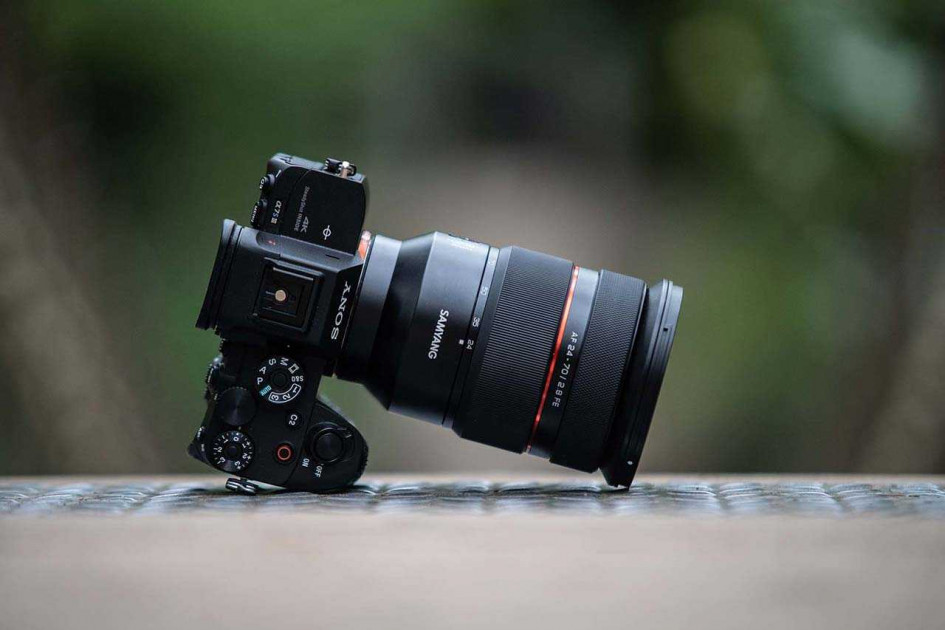With a lot of humour and originality, Nina Röder places herself and her mother amid memorabilia taken from the home of her deceased grandparents. The grotesquely absurd tableaux reveal a coming to terms with issues of loss and mourning, which she expresses in an unsentimental manner. Röder spoke with us about who and what has inspired her, the concept of the theatre of the absurd, and why she considers the square format ideal.
How did the Champagne in the Cellar series come about?
When my grandparents passed away three years ago, we had to clear out and sell their house within a week. We quickly packed most of their belongings and put them in my mother’s cellar. With ambivalent feelings, caught between amazement and melancholy, I started to go through all the items, furnishings and, especially, my grandmother’s clothes, at the beginning of 2020. During the corona lockdown, my mother and I used the cellar to stage portraits, self-portraits and still lifes for the camera, and thus created a stage for a theatre of the absurd.
Please explain more about the idea of a ‘theatre of the absurd’. How did you integrate it into the photographic process?
Figuratively speaking, Samuel Beckett said the following about absurdity: it is the means we have, when we are at a loss for words. In my opinion, this also applies to the loss of people. His work is also about non-functioning communication – a communication that takes place in a void. That’s why the theatre of the absurd often has tragi-comic features, which I wanted to convey in my photographs. I did so by combining, for example, my grandparents’ dentures with objects that are far removed from any meaningful context.
The personal items became props for a theatre of the absurd. Did it all happen spontaneously, or did you take a conceptual approach?
A mixture of both. There were concrete concepts for some of the photos, but the results that you see were mostly the result of an open performative process. You’ve got to consider the fact that this cellar was full of objects. A small area was cleared for the backdrop and for the flash equipment. If a motif didn’t convince me completely, I just dove into the mountain of belongings again, to find something that would complement the motif.
Were the items all original finds, or did you organise additional accessories?
All the objects that you see in the pictures are items that came from my grandparents. After the Second World War, they fled from Böhmen to Bavaria. Like so many others belonging to the war generation, they were unable to throw anything away, so as to be prepared for any “bad times” ahead. That’s why my grandmother, in particular, had kept everything since the fifties.
What was the biggest challenge you faced while photographing?
I often start a project, or an individual motif, with a specific idea or concrete image in mind. Sometimes, when I realise the image, it turns out that the fixed idea I had in mind wasn’t particularly exciting. That’s why I need the possibility of something unplanned happening during the photographic process. The best example of this is my mother, whom I photographed frequently for Champagne in the Cellar. She is unpredictable as a portrait subject and, while I was photographing, often came up with ideas and poses that I hadn’t expected. So, not becoming bored, while finding and allowing the emerging – the defining element – to arise, is what I consider the greatest challenge.
You prefer to work with a square format. Why?
In my opinion, a sculptural aspect in a photograph is emphasised by a square. In this series, I no longer worked with a direct flash. For many of my series I’ve found it appropriate, because the aesthetics of a certain “cheapness” produced by a direct flash technique, combined with emotional themes, can lead to an exciting friction. On this occasion, however, I opted for a different lighting scheme; one that was sufficient for the tragi-comic aspect of the content. Furthermore, I work a lot on the poses. I often find it more interesting when poses show more of a paused sequence of movements, than a deliberate pause.
You worked with the body of an SL2 and the APO-Summicron-SL 90 f/2 ASPH. How was your experience with this system?
I must say that I fell in love with the camera. Coming from medium-format analogue, I found the operation and the navigation menu very intuitive, and not too overloaded with functions. Improvising and performing for the camera are central to my way of working. This is why, for example, the continuous shooting function and the focussing options enabled a technical relationship that gave me a lot of freedom.
Do you have an idea of how you would like your visual language and forms of expression to evolve in the future?
Two groups of themes have crystallised in my portfolio: photographs that were taken in natural spaces which, among other things, connect to a discourse on post-romanticism; and series that deal with biographical narratives concerning my family. The photos I take in natural spaces deal with different aspects of psychological states in connection with the phenomenon of people letting go. At this time, I’m working on a project in Marienbad, Czech Republic, which aims to combine both of these elements.
Born in Neuendettelsau, Germany, in 1983, Nina Röder first studied Theatre, Media and Literature at Bayreuth University; and then Media Art and Design, with a focus on Photography, at the Bauhaus University in Weimar. She has been a Professor of Photography at the University of Europe for Applied Sciences (former BTK) in Hamburg, since 2017. In 2020, she completed her Doctorate in the field of Artistic Research. Her work has been displayed at international festivals and exhibitions, including the GoaPhoto Festival in India, the European Photography Month in Berlin, and the Format Festival in Derby, UK. You can see more of Nina Röder’s work on her website and on Instagram.
Leica SL2
It’s your choice.



















